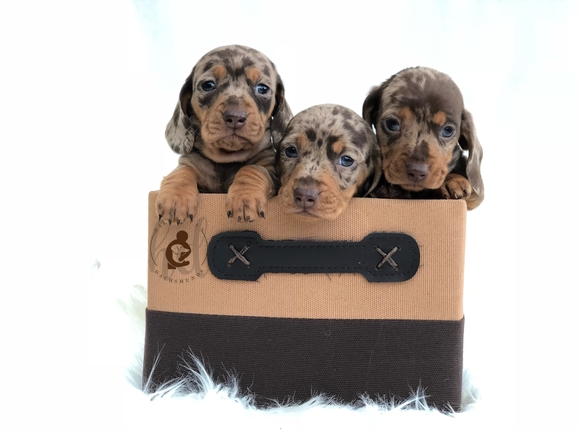We DNA test for this genetic condition, although not overly common but still necessary to test for Neuronal Ceroid Lipofuscinosis (NCL) in miniature dachshunds.

Lysosomal storage diseases of the central nervous system represent a group of disorders that have in common the accumulation of metabolic by-products in neurons. Storage diseases can primarily affect the cerebellum, but they usually affect multiple areas of the brain and spinal cord. Animals with lysosomal storage diseases affecting the cerebellum typically are young, due to the fact that these diseases are congenital. There are several documented lysosomal storage diseases. Neuronal ceroid-lipofuscinosis (NCL) has been most commonly reported in dogs. A similar condition affects cats. The disease results from intraneuronal accumulations of ceroid-lipofuscin granules. It has been related to primary cerebellar disease in the dog and can result in cerebellar atrophy.
Dogs with this storage disease are usually less than 1 year old; however, they may not show clinical signs until they mature. The majority of dogs begin to exhibit signs of an abnormality between 12 and 18 months of age.
Signs of Neuronal Ceroid Lipofuscinosis
Affected dogs present with behavior change and circling. The disease progresses over 2-3 years to include poor movement incoordination, difficulty in swallowing, vision and hearing loss, rapid motion of the eyeball (nystagmus), and voice changes. Enlargement of the nerves of the forelimbs can be detected, which is due both to fluid accumulation and infiltration of the nerves. At a later stage, signs of the disease include seizures, tremors, and gait abnormalities.
Diagnosis of Neuronal Ceroid Lipofuscinosis
Diagnosis of ceroid lipofuscinosis is based upon clinical signs, especially in a susceptible breed. Cerebrospinal fluid analysis is usually normal but may reveal increased protein levels with a normal cell count. Computed tomographic (CAT) or magnetic resonance imaging (MRI) of the brain of dogs with ceroid lipofuscinosis may reveal abnormalities, such as brain atrophy and abnormal brain-tissue density. Definitive diagnosis will require additional skin and/or blood tests.
Prognosis for Neuronal Ceroid Lipofuscinosis
At present, the prognosis for the lysosomal storage diseases in dogs and cats is grave. For the majority of these disorders, affected animals are euthanized due to progressive worsening neurological dysfunction within the first year of life. For the more slowly progressive disorders (ceroid lipofuscinosis), continuous neurological dysfunction leads to death or euthanasia usually within 1-2 years of diagnosis. Despite the poor outlook for these disorders, bone marrow transplantation and lysosomal enzyme replacement therapy have been successful in some human and animal cases. Gene transfer therapy is also being actively investigated and will hopefully be available in the future.
source: http://www.gopetsamerica.com/dog-health/ceroid-lipofuscinosis.aspx